Tours

Rome Tourist Card
Rome Tourist Card
Snap up the Rome Tourist Card and you'll get everything you need to explore Rome's top highlights including Colosseum, Palatine Hill, Roman Forum and Hop on/off bus. You can even choose the order you see things in.

Colosseum, Roman Forum & Palatine Hill: Priority Entrance
Colosseum, Roman Forum & Palatine Hill: Priority Entrance
Skip the long lines at the Colosseum with this priority-entrance ticket. This ticket will let you bypass the crowds. And after exploring the Colosseum you can head to the area of the Roman Forum and the Palatine Hill.
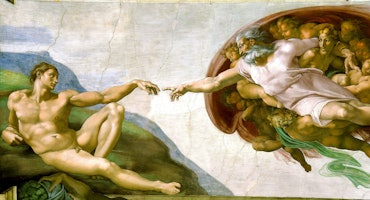
Vatican Museums & Sistine Chapel: Skip The Line
Vatican Museums & Sistine Chapel: Skip The Line
This ticket will make you save stress and time by allowing you to get priority entrance and skip the line. Visit the the countless masterpieces by Michelangelo, Raphael, Caravaggio, Tiziano and the Sistine chapel.
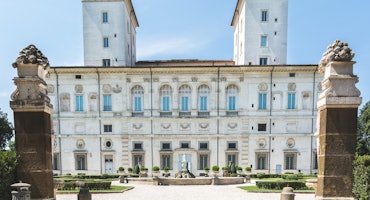
Borghese Gallery: Fast Track
Borghese Gallery: Fast Track
Galleria Borghese is located in the villa of the park Villa Borghese. Admire the architecture and furnishings of this beautiful villa. It is a museum full of art from the Renaissance. The collection includes several sculptures and paintings. Because of limited capacity get tickets for this museum weeks in advance.
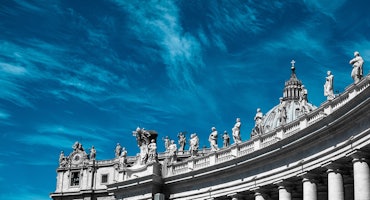
St. Peter’s Basilica: Dome Climb with Guide
St. Peter’s Basilica: Dome Climb with Guide
Get the most out of your visit to St. Peters with a guided tour to climb the basilica’s dome designed by Michelangelo and admire one of the stunning view. After the tour, you can explore the the basilica at your own pace.
Trevi fountain
The Trevi Fountain is the most famous and largest fountain in Rome, considered by many as the most beautiful fountain in the world. It has a width of 20 meters and a height of 30 meters. It is situated at the Piazza di Trevi (Trevi’s square). It marks the end point of the three road junction that leads to Acqua Vergine (previously known as Aqua Virgo), one of the aqueducts which once served as the water source of Ancient Rome. If you are visiting Rome, you need to include this monument in your sightseeing tour!
The fountain and the square, considered as a whole, sum up the spirit of this city very well, with its unique mixture of coexistent beautiful artistic legacies of different historical periods, living together in perfect harmony. The fountain is Baroque, while the buildings around it belong to the rococo and neo-classical style. Right in front of the fountain, there is a building that incorporates the rare remains of a Medieval porch. On its right, we find the church of S. Anastasio di Trivio, originally built in the Middle Ages, and completely renovated in Baroque style in 1650.

When arriving here from one of the narrow streets which open to the square, you will be welcomed by the gentle “signature sound” of the waters flowing on the marble complex and merging in the basin. The sudden sight of the fountain built on the back of the building called Palazzo Poli, is amazing. No matter which street you decide to walk to get here, the beauty of the fountain will only be revealed once you arrive in the square. At first sight, it seems that the Trevi square is too narrow to contain the beauty of the monument, but, once you stop here for a few minutes, you will fully enjoy the almost intimate atmosphere of this magical place.
Historical Background
In the exact place where the Trevi Fountain is currently situated there once stood a smaller fountain, which dated back to the fifteenth century. The first drawing of the fountain is dated 1410. It featured a single rectangular basin and a marble wall where water gushed from three different mask-shaped points.
In 1732 Pope Clement XII organized a contest for architects to design a new fountain on the site. Architects had complete freedom with the structure, and there were no specific rules. The winner of the competition was Nicola Salvi, an architect strongly influenced by the famous Gian Lorenzo Bernini (the designer of the Spanish Steps). The construction of the fountain started in 1732. Unfortunately, Salvi wasn’t able to see the final results of his efforts as he died eleven years before the completion of the fountain (1762). After Salvi’s death, the construction was continued under the leadership of Giuseppe Pannini and, later on under sculptor Pietro Bracci. The fountain was built backing Palazzo Poli, this is why it is often recognized as part of this building.
The fountain was built in the Baroque style. This style can be recognized with its exuberance and opulence. A former original design of the fountain was made by Bernini, and commissioned by Pope Urban VIII after finding the original fountain inadequately dramatic. When the Pope died, the project was abandoned, as it was considered too expensive. Therefore, the fountain is totally based on a project made by Salvi.
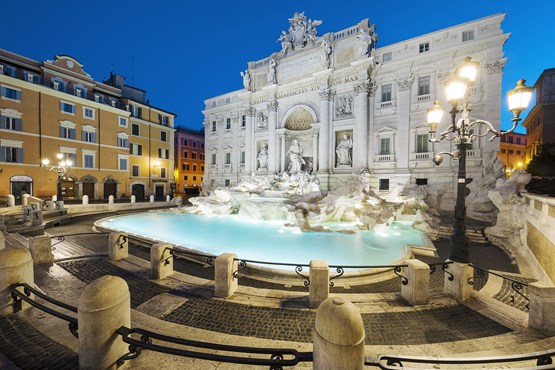
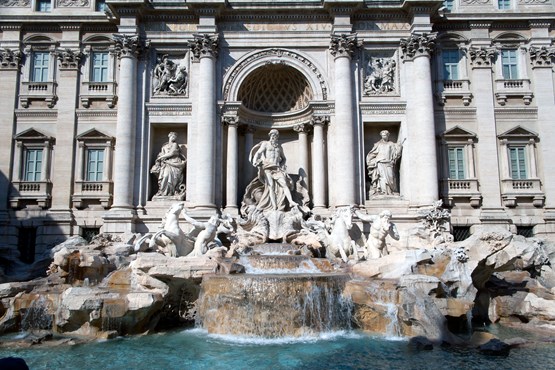
Description of the Trevi Fountain
This theatrical masterpiece features the statue of Oceanus, one of the Titans, father and god of the seas and rivers, looking strong and majestic as the central figure. He is riding in a triumphal shell-shaped chariot being pulled by two seahorses which are also guided by two Tritons. One Triton is trying to tame a restless seahorse whilst the other is guiding the calm one. The seahorses serve as the symbol of the erratic moods of the sea. Sculpted under Oceanus are seashells, salamanders, and horses. The water of the fountain starts from the feet of Oceanus, then it goes over the rock in a downward motion, and ends in a huge water basin. It has to be noted that the main statue is not one of Neptune (which is commonly depicted holding a trident), but one of its powerful progenitors.
On the left portion of the fountain, you can see the statue of the symbol of abundance. It is holding a horn that is filled with different fruits. Another notable statue is built above the sculpture. This sculpture is the image of Agrippa commanding his subordinates to build the aqueduct. The statue of the symbol of health is built on the right side of the fountain. There is also a snake that drinks from the cup that it is holding. The symbol of health is wearing a wreath of laurel as its crown. This wreath is said to symbolize Apollo, who is the father of Aesculapius, the god of medicine. Above the image of health is a relief of a young girl pointing a finger to a spring and instructing a group of soldiers to fetch water from it. The fountain is surrounded by the sculptures of thirty different species of plants, including oaks, artichokes, wild figs, mulleins, pear, and grapes.
At the top of the building, on the architrave, and just below the Papal stem, there is an inscription in Latin commemorating the initial phase of the monument’s renovations: “Pope Clement XII adorned with a magnificent artwork the Virgo Aqueduct, famous for its abundance and salubrity, in the year of our Lord 1735, the sixth year of his pontificate”.
“
The Trevi Fountain is so beautiful and romantic that it was featured in several films. This stunning fountain was used as a backdrop and a setting for many renowned local and international movies. It caught the attention of many people from around the world when it was featured in the film La Dolce Vita. Other films where you can see the fountain are the Roman Holiday, The Lizzie McGuire Movie, Angels and Demons, Three Coins in the Fountain, and When in Rome.
The Trivium
Previously, there were three roads which intersected close to the spot where the fountain is presently located, in the small square called Piazza dei Crociferi. The name Trevi was derived from the Latin word Trivium. Trivia, who is known as the Roman goddess, is said to be the protector of the streets of the Trevi district. These three streets were Via De’ Crocicchi, Via Poli, and Via Delle Muratte.
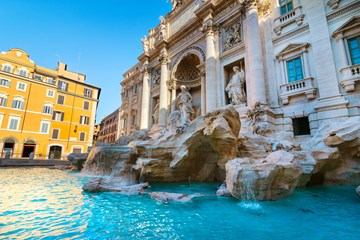
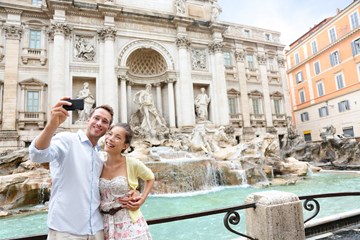
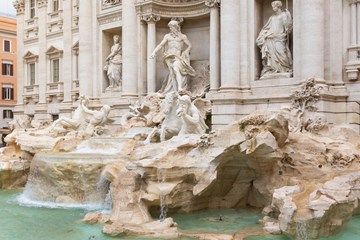
Legends and Stories around the Trevi Fountain
Tradition says that if you throw a coin over your shoulder and into the fountain, then quickly turn around and you are able to see the coin hitting the surface of the water before going under, you will visit Rome again. If you throw two coins, you’ll soon find the love of your life, and if you throw a total of three coins, you could even end up getting married in Rome!
Apparently, this "ritual", captured by thousands of tourists each day on camera for the unmissable souvenir photo, was created by an archaeologist, Wolfgang Helbig, who was sad he had to leave Rome before he had the chance to visit all its monuments and historical sites. He threw the coin, then drank the water coming out of the fountain to seal the promise he was coming back soon to the Eternal City.
Each day, thousands of coins are collected by the council’s administration. They are counted and then given to charities that take care of the homeless and people in need. Some of the money is also used for the maintenance of the monument.
There is another tradition surrounding the fountain. In former times, when people still drank out of the fountain, girls used to bring a glass of the Trevi’s water to their fiancées, if the latter were going to leave the town for a long journey or going off to war. This ritual granted their love would endure their time apart.
There is also a bizarre anecdote surrounding this monument, which dates back to the time when Salvi was building it. Facing the fountain, at the far right (on via della Stamperia) there is an ornamental vase, which, because of its rounded shape, is commonly known as the Ace of Cups, for its resemblance with the Italian playing cards. Its position is quite odd, because it doesn’t add anything to the monument, and, in such a harmonious ensemble, does not have any counterpart on the other side. When Salvi was building the fountain, the barber that owned the shop overlooking the square from Via della Stamperia, used to torment the architect with constant criticism and pointless suggestions, because he didn’t like Salvi’s work. That’s why, in typical Roman style ironical “revenge”, the architect decided to place the big rounded shape in front of the barber shop’s windows, so that the view of the finished monument would have been completely blocked.

Travel Tips
The Trevi Fountain is visited by thousands of people every day. Official sources estimate around 1.200 visitors per hour at peak times, which totals around half a million visitors each month. Taking a picture when there is (almost) no one else around is, therefore, next to impossible. But, if you are in Rome in the middle of August, you could give it a try. In fact, this time of the year, most Romans are on their holidays, so the city is naturally less crowded, even if the number of tourists is still very high. You can take advantage of the long summer days, when the sun rises very early in the morning. If you come here at around 6 am, it will already be sunny and quite hot and you will be probably one of the few around the magnificent square. It really pays to be an early bird, we can tell you from experience!
If you decide to follow the previous tip, you probably won't have the time for a full breakfast. Nothing to worry about. If you face away from the fountain and look right, you’ll see a boulangerie on the corner between Vicolo del Forno and Via delle Muratte. It’s called Antico Forno di Fontana di Trevi (Trevi’s ancient bake shop) and here you’ll find great homemade pizza and all sorts of delicacies that you can taste on a table outside or take away with you.
Renovation
The Trevi Fountain has recently undergone renovations. Small deteriorated areas and cracks were repaired, but what really made a difference was the work on the marble discoloration: the fountain is now whiter and shinier than ever! During the renovations, the entire fountain was covered by scaffolding. The renovation project, which lasted 18 months, was completed in November 2015. The total cost incurred for the renovations amounted to two million euros, and it included new lighting equipment. It was funded by a famous Italian fashion company. A new set of led lights was added by the council administration in 2019.
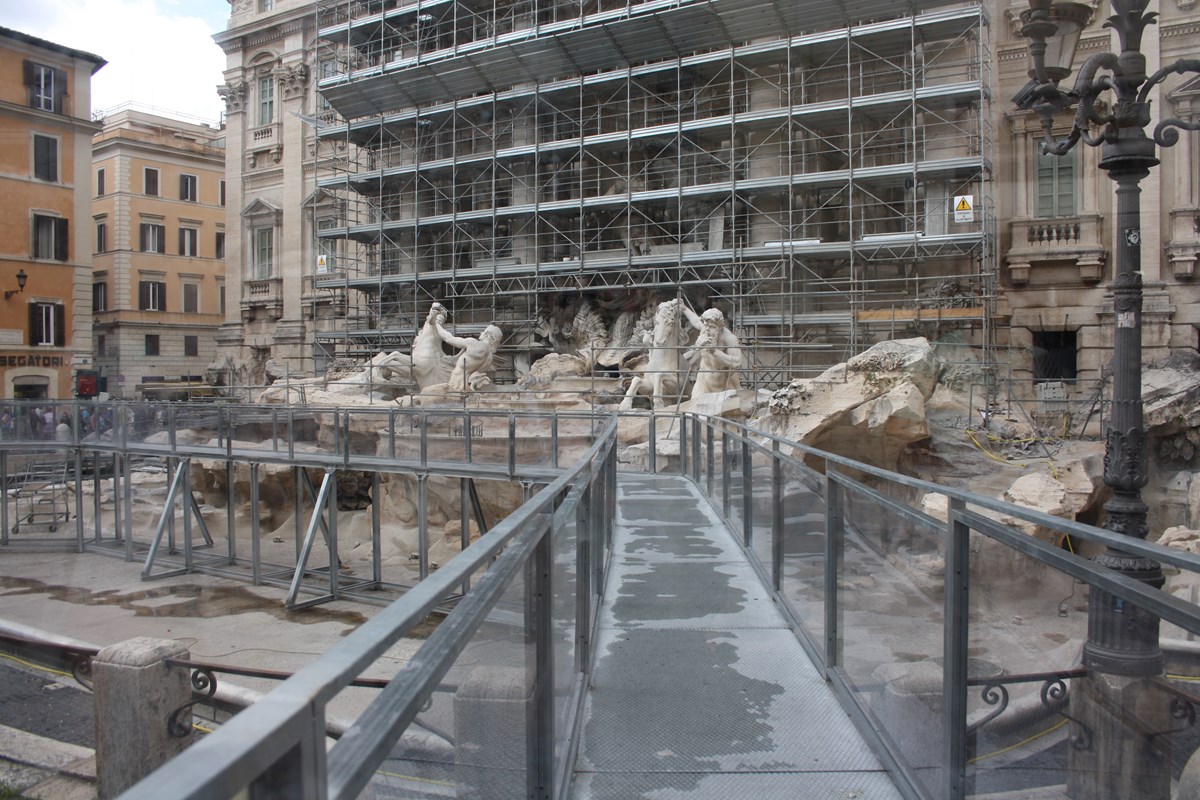
Surroundings
Since the Trevi Fountain is situated in the historical center it is surrounded by many sightseeing spots. The Pantheon is just a stone's throw away from the fountain. So if you want to see this monument, you can include a visit to the fountain on the same day. Another notable monument nearby the fountain is the gigantic Colosseum. It is quite far from the fountain as compared to the Pantheon, but it is still located within walking distance. From the fountain, you can also walk to other popular spots, including Piazza Navona, Spanish Steps, Piazza Barberini, and Fontana del Tritone.
FAQ
What is the money thrown into the Trevi fountain used for?
The money that is thrown in the Trevi fountain was previously used for charities, now the money goes to the municipality so that it can be used for maintenance.
How do I get to the Trevi fountain?
Metro line A stop Barberini
What places of interest are near the Trevi Fountain?
The Pantheon is near the Trevi fountain
Does it cost money to visit the Trevi fountain?
It does not cost money to visit the Trevi fountain
Can you swim in the Trevi fountain?
Even though this happens in the movie La Dolce Vita, this is not allowed. You risk a high fine if you do so.



